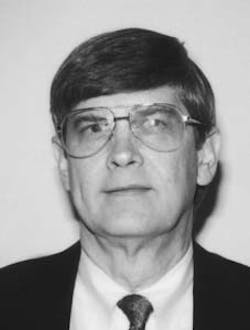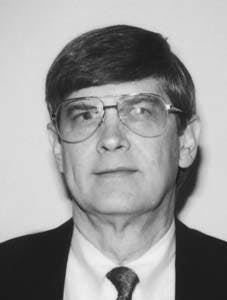Asymmetric nozzle designs increase penetration rate
J.E. Akin
Rice University
HoustonN.R. Dove and S.K. Smith
Vortexx Group Inc.
Bellaire, Tex.
Asymmetric nozzle designs can change drill bit hydraulics significantly, increasing penetration rates.
The analyses of these new designs have included computational fluid dynamics models, controlled drilling laboratory tests, and actual horizontal and vertical field wells with offset comparisons.
The results for both polycrystalline diamond compact (PDC) bits and rock bits verify a significant increase in the rate of penetration (ROP) by simply changing to a new family of nozzle designs while holding other parameters constant.
Several researchers have concentrated on trying to improve the hydraulic efficiency of drill bits for oil and gas exploration by modifying nozzles, or jets, with a goal of increasing turbulence or developing regions of negative pressure on the impingement surface. Some early jet designs based on cavitating or resonating fluids had a reasonable theoretical basis, but these required conditions that could not be met or maintained in an actual field drilling environment.
Some recent nozzle designs try to increase turbulence by using several converging small diameter tubes to produce swirling flows inside the nozzle. These tubes tend to plug in actual drilling, however. A more recent approach has tried to use moving parts inside the nozzle, but the moving parts can be gummed up or blown out by drilling muds.
The Vortexx Group Inc. chose a different approach and used a unique geometric transition shape and basic fluid mechanics concepts to develop a negative impingement pressure nozzle that also increases turbulence. These patented nozzle designs produce regions of both positive and negative pressure on a surface when the fluid flowing through the nozzle impinges on the surface. This behavior is quite different from the standard circular axisymmetric nozzle, which produce only regions of positive impingement pressure on the surface.
The Vortexx nozzles can produce flows with additional benefits as well. These benefits include a four or fivefold increase in the volume of fluid that is entrained or drawn into the jet or nozzle flow. Also, the peak turbulence levels in the regions around the jet increase significantly. These jets have no moving parts. They use the full-feeder tube inlet flow and, thus, tend not to plug.
Verification of the negative impingement pressure phenomenon was first obtained in controlled laboratory pressure measurements. Those data were then confirmed by computational fluid dynamics (CFD) studies of the nozzle interiors and the region between the nozzle and the impingement (well bore) surface. The CFD research showed that the negative pressure regions could be developed by several different Vortexx nozzle designs.
Some of the early Vortexx nozzle designs were used successfully in the field where good offset data were available. These successes led to the improved nozzle designs that were then tested in typical drilling research facilities to determine which bit design parameters could be changed to take better advantage of the new hydraulics at the well bore face. Those bit manufacturer proprietary test results are expected to be published in the future.
Additional rate of penetration tests were conducted on common existing bit designs at the Amoco Drilling Research Laboratory (ADRL) in Tulsa in February 1996. The intent of those tests was to vary only the weight on bit (WOB) and the choice of nozzles to determine their effects on the rate of penetration. A typical symmetrical nozzle placement and its associated flow area pattern were used even though a higher ROP can be expected with asymmetric nozzle placement.1 All tests were run in Catoosa shale.
Two bits of different types, diameters, and nozzle flow areas were tested.
PDC lab tests
A 61/8-in. Diamond Products International (DPI) TD290H PDC bit was run with a flow rate of about 296 gpm and a WOB ranging from 3 to 13 kips. A standard 12/32-in. diameter circular nozzle was tested against a Vortexx model V12VLAE.
The test data along with cubic polynomial fits to those data are given in Fig. 1 [35914 bytes]. Over a wide range of WOB values, the Vortexx nozzles increased ROP more than 100%. On the low end of the WOB range, the increase was about 30%, which still exceeded the goal of a 20% increase for a nonoptimized Vortexx nozzle configuration. The Vortexx nozzles gave an excellent increase in ROP performance for this PDC application.
This particular bit performance could probably be further improved by the use of different Vortexx nozzle models (exit geometry shapes) which were not available at the time. A solid model of the interior shape of the two-lobe Vortexx nozzle used in the DPI tests is shown in Fig. 2 [26617 bytes]. A similar shape with three lobes was used for the nozzles in the Security PDC bit field tests to be described later. A third geometry was used for the ADRL rock bit tests.
Rock bit lab test
A 77/8-in. Smith International Inc. F15H rock bit was also tested at the Amoco Drilling Research Laboratory. The rotating speed was about 80 rpm, and the flow rate was about 323 gpm.
Three standard 12/32-in. circular nozzles were tested against an alternate geometry Vortexx model V12CLBA. The WOB ranged from about 33 to 73 kips.
The ADRL experimental results were again fitted to cubic curves (Fig. 3 [74633 bytes]). The ROP enhancement ranged from about 30% on the low end WOB to about 50% near the maximum WOB. While these ROP improvements from simply changing the nozzle hydraulics are quite impressive, they do not match the improvements obtained for the PDC bits. The complex geometry of the rock bit, its moving parts, the increased standoff distance, and other factors make the optimization of the Vortexx jet geometry for rock bits a slower process.
The continuing CFD parametric studies of the Vortexx nozzles for rock bits suggest that additional ROP increases are obtainable. Even so, this test verifies that existing bit designs can yield significant ROP improvement simply by the addition of Vortexx nozzles.
Field test offset data
The Vortexx jets have also been extensively field tested in a number of areas. To date, the total drilled hole is 55,000 ft in a total of 1,100 hr. These field tests include a combination of vertical, directional, and lateral well bores. The current longest Vortexx run is 138 hr.
These field tests and offset data have shown that the use of the Vortexx nozzles in standard PDC bits and rock bits can lead to significant increases in ROP. The field results will be summarized in terms of two vertical series and one horizontal well.
First vertical series
Of particular interest is the series of tests conducted in Brazos County, Tex., in 1993-1996. Security/DBS provided 97/8-in. PDC bits built on its B25-4 platform. More than 20 similar wells were drilled using these Vortexx-equipped bits. A large historic data base of offsets was used for performance analysis and comparisons.
The development of a field testing protocol called for elimination of as many variables as possible. While this is difficult in most instances, here it was accomplished through cooperation with Union Pacific Resources Corp. An objective analysis of the results was possible due to the following factors:
- All wells were drilled in the same formations (Midway shale, Navarro, and Pecan Gap).
- All wells were drilled in the same area.
- Offset data were available for non-Vortexx wells.
- Geolograph charts were available for analysis of Vortexx wells and most other wells.
- Depth in and out remained constant relative to formation tops.
- Rigs, operator, field supervision, and crews remained constant.
- All wells were drilled using the same mud programs.
- All wells were drilled with the same hydraulics programs.
The resulting data represent more than 44,900 ft of hole drilled and a total of more than 900 hr of actual drilling time on bottom. Most of the Vortexx runs were about 50 hr long, with the longest Vortexx run in this series being 88 hr.
None of the Vortexx jets showed any erosion problems. The true vertical depth (TVD) ranged from 9,700 ft to more than 18,000 ft. Most of the runs ranged 11,000-13,000 ft TVD.
The most reliable set of PDC offset data came from a group of 23 wells that were comparable to three Vortexx test wells. The only observable statistical correlation for the increased ROP in the field appears to be the use of the Vortexx nozzle. Using International Association of Drilling Contractors (IADC) drilling data, there was an average 22% increase in ROP using the earliest Vortexx nozzle design, if the outlying data are included. Dropping the outliers gives a Vortexx ROP increase above 40% (Fig. 4 [107688 bytes]). The slowest of the three Vortexx runs (57.4 ft/hr) was in a rerun bit that lost a blade early in the second run.
Second vertical series
A smaller, more recent series of vertical wells with comparable offsets were drilled in Washington County, Tex., within the past 12 months. All five of these bit runs were through the same formations with comparable depths and drilling conditions.
The ROP from a Security/DBS FM2565 model 97/8-in. PDC bit equipped with Vortexx jets was compared to the IADC ROP results for four offset wells employing standard jets. The offset bits were a Hughes R-545, a Hycalog R-61HF, a Security B25-4, and a Smith M70. The Vortexx equipped Security FM2565 exceeded the fastest (Hughes R-545) offset ROP by 38.5% and exceeded the average ROP for the four offsets by 52% (Fig. 5 [128134 bytes]). Because the structure of the two Security bits in Fig. 5 is very similar, it is believed the ROP increase is primarily attributable to the new jet hydraulics.
Horizontal series
A pair of lateral rotating and sliding ROP comparisons have been obtained recently for two different horizontal laterals in the same well in Grimes County, Tex.
This well used 61/8-in. Diamond Products International PDC model MT35H bits. The bits were identical. The laterals were also identical except for the formations drilled. The bit equipped with standard nozzles drilled a Budda lateral. The Vortexx equipped bit drilled a deeper, hotter, and harder Georgetown lateral.
Typically, one would expect the ROP to be lower in a Georgetown lateral. In this case, however, the Vortexx equipped bit was faster in both the rotating and sliding modes. The rotating ROP increased 23.4%, and the sliding mode ROP increased 25.6% with the Vortexx nozzles.
Fluid mechanics
To understand conceptually the fluid mechanics of the asymmetric negative pressure nozzle, it is best to start with a review of the classical axisymmetric circular nozzle (Fig. 6 [15727 bytes]). The classic axisymmetric nozzle produces only positive, and axisymmetric, pressure when it impinges normally to a standoff surface (well bore face) bounding the fluid domain.2-3
There are relatively few parameters that can be varied to control this type of flow. They are primarily the nozzle outlet radius, the standoff distance to the wall, and angle of the velocity vector around the exit circumference of the nozzle (relative to the outlet geometric center). The latter angle is dependent on the nozzle transition shape from its inlet to outlet. Of course, the nozzle transition surface shape also has a major effect on the magnitude of the nozzle exit velocity. The nozzle exit velocity angle influences the additional entrainment of the surrounding fluid into the fluid jet exiting the nozzle. That is, it affects the increase in momentum of the jet flow before the flow impinges on the standoff surface.
It is desired to create a negative pressure on regions of the impingement surface normal to the jet. The classic axisymmetric nozzle jet seems to offer no hope for reaching that goal. Yet, there are important features of the classical impinging jet flow that are often overlooked and that are critical to producing a negative pressure nozzle and jet flow.
By examining a radial plane through the axisymmetric jet centerline, one finds that the classic flow does involve one or more vorticity cells with significant negative pressures.4 While they do not intersect the impingement surface to produce regions of negative impingement pressure, they can be relatively close to the surface.
The classical negative pressure cells and their associated vortices are, of course, axisymmetric. That is, they are torus shaped (doughnut shaped) cells that are located parallel to, and above, the impingement surface. The modification or perturbation of the location of these cells is the key insight to creating a design which forces a cell of negative pressure to intersect the surface, thereby creating a region of negative impingement pressure.
Imagine what would happen if the nozzle geometry were slightly perturbed such that the outlet radius and velocity vector slope are both periodic around the outlet circumference, as sketched for two planes in Fig. 7 [16617 bytes]. There would still be cells of vorticity and significant negative pressure surrounding the axis of the nozzle jet. Now, however, some portions of the cell would be pushed down closer to the impingement surface while other portions of the cell would be pulled up toward the nozzle outlet plane.
Thus, the negative pressure (and vorticity) cells would undulate up and down, around the circumference of the jet. Likewise, portions of the original cell torus would be strengthened while other regions would be weakened. In some cases, two cells of negative pressure are merged together in a nonuniform manner.
Let R, A, and u denote the outlet radius, outlet velocity angle, and angular position around the circumference, respectively. Then, the classic nozzle has R and A constant (independent of u. The perturbed model, however, has both the radius and exit velocity angle depending on the position around the circumference, that is, R(u) and A(u).
The design problem is to determine if there is a combination of these perturbed functions R(u) and A(u) that will force at least one negative cell to intersect with portions of the bounding standoff surface and thereby create the desired negative pressure impingement regions. Of course, those regions would have positions that are also periodic functions of the circumferential position, u.
The answer is affirmative. There is more than one combination of R(u) and A(u) that will cause negative impingement pressure and at the same time increase the turbulence levels.
A contributing factor in forcing the negative pressure cells to intersect the impingement surface is the increased entrainment of the surrounding fluid into the jet. The entrainment of additional fluid increases the velocity, and thus momentum, of the jet flow. Of course, in the classic circular jet, entrainment is constant (independent of u).
For the perturbed exit geometry described above, the entrained flow could be increased for some values of u and decreased for others, but the net increase has been shown to be significant. The regions with increased entrainment would tend to force the negative cells toward the impingement surface.
The basic patented geometries of a negative pressure Vortexx jet nozzle typically consist of a shape having a circular inlet converging along a noncircular transitional surface and terminating with a noncircular outlet orifice. The transverse cross section of the transitional surface defines a curve which has a radius that varies in a periodic manner around the circumference.
Likewise, the corresponding slope, relative to the longitudinal axis, of the point can also vary in a periodic fashion. Cross-sectional curves with two, three, and four lobes have produced negative impingement pressures, as have other asymmetric curves. The asymmetric Vortexx jet also has increased turbulence levels.
The initial CFD parametric studies showed that the classic jet has turbulence that has a "top hat" shape independent of u. That is, most of the turbulent kinetic energy is localized in two regions:
- One is a relatively thin cylinder surrounding the main jet.
- The other is a thin short "rim" along the impingement surface.
Because of the asymmetric entrainment of fluid, the asymmetric Vortexx jet has much higher turbulence levels that vary around the circumference. The location of the maximum turbulent level around the jet, or parallel to the standoff surface, can be controlled by the geometric perturbation of the shape of the nozzle around its circumference. The asymmetric Vortexx nozzle generally has much higher turbulence levels than the classic circular jet.
Nozzle pressure tests
A series of early experimental flow visualization studies and pressure measurements in water were conducted with the classic axisymmetric nozzle and the new two, three, and four-lobe asymmetric Vortexx nozzles.
The classic positive impingement pressure result was verified and is shown along with the three-lobed asymmetric pressure measurement results in Fig. 8 [140148 bytes], Fig. 9 [196095 bytes], Fig. 10 [113545 bytes], Fig. 11 [186644 bytes]. Note that the asymmetric Vortexx nozzle produces significant regions of negative pressure on the impingement surface. The location of those regions depends upon flow rate as well as nozzle exit geometry.
The experimental pressure measurements verified the theory behind the perturbed geometry nozzle. An independent verification of this newly observed flow phenomenon and negative pressure distribution was also obtained from both finite element and finite volume computational fluid dynamics studies.
CFD studies
The computational fluid dynamics (CFD) studies were carried out with various flow analysis codes.4-5 An initial series of axisymmetric studies was run to give insight into the location of the negative pressure cells and the amount of entrainment. A series of turbulent three-dimensional models was constructed for periodic symmetry models of the two, three, and four-lobe asymmetric nozzles.
These studies used the solution of the full nonlinear, three-dimensional, Navier-Stokes equations coupled with the "K-Epsilon" turbulence closure system for the given flow domains.4 They were evaluated with standard as well as hp-adaptive finite element systems and with finite volume codes. Initially, periodic symmetry was used for simplified boundary conditions so as to reduce the time required for the parametric studies.
The computed asymmetric negative impingement pressure contours on the standoff plane agreed with the nozzle pressure tests. Of course, the standard nozzle geometries were also run as three-dimensional models to verify the programs and to compare them with the asymmetric new designs.
Numerous CFD studies have since shown that the new flow phenomenon can be controlled to create optimum locations for negative pressure and maximum turbulence. These studies are now being extended to include more of the bit geometry. This will lead to additional improvements in the local hydraulics and will help bit designers on future bit designs.
Results
A new fluid flow phenomenon has been developed by making logical extensions of the classical axisymmetric nozzle flow. The CFD and experimental studies have verified that several new and innovative nozzle designs can produce negative impingement pressures and high turbulence regions.
The location and size of these regions can be controlled in part through the geometric design of the nozzle. Field tests, offset data, and drilling research laboratory tests have shown that the use of these Vortexx nozzles in standard PDC and rock bits can lead to significant increases in ROP.
Optimization of the bit geometry and nozzle geometry are expected to lead to additional ROP enhancements in the future.
References
1. Wells, M.R., and Pessier, R.C., "Asymmetric Nozzle Sizing Increases ROP," Drilling Contractor, pp. 50-51, September 1993.
2. Abramovich, G.N., The Theory of Turbulent Jets, MIT Press, Boston, 1963.
3. Rajaratnam, N., Turbulent Jets, Elsevier, New York, 1976.
4. Akin, J.E., Smith, S.K., and Dove, N.R., "The Negative Impingement Pressure Nozzle Phenomenon," Computational Mechanics '95, edited by S.N. Atluri, Springer, 1995, pp. 1108-1115.
5. Akin, J.E., Finite Elements for Analysis and Design, Academic Press, London, 1994.
The Authors
J. Ed Akin is a professor of mechanical engineering and professor of computational and applied mathematics at Rice University in Houston. For more than 25 years he has worked in computational mechanics and computer aided design. Akin has published four books and more than 100 articles in those fields. He serves as a consultant in finite element analysis and computational fluid dynamics. He is a fellow of the American Society of Mechanical Engineers and a member of the Society of Petroleum Engineers and the American Society of Civil Engineers. He is a registered professional engineer in Texas and Tennessee.
Akin holds a BS in civil engineering and an MS in engineering mechanics from Tennessee Tech University. Akin has a PhD in engineering mechanics from Virginia Polytechnic Institute and State University.
N. Roland Dove is a consulting drilling engineer and cofounder of Vortexx Group Inc. in Bellaire, Tex. Currently he is engaged with Amoco in Sharjah, U.A.E. His prior experience includes work with major drilling contractors, independent operators, and directional drilling companies. Dove holds a BS in mechanical engineering from Texas Tech University.
Stephen K. Smith is a founder and president of Vortexx Group Inc. in Bellaire, Tex. He has more than 24 years' experience as a consulting drilling engineer on domestic and international projects. Past work includes development of new technology for the directional drilling industry, management of drilling operations for a mid-sized drilling contractor, and projects in Central Asia, Southeast Asia, the C.I.S., and South America. Smith has a BS in petroleum engineering from the University of Texas.
Copyright 1996 Oil & Gas Journal. All Rights Reserved.



